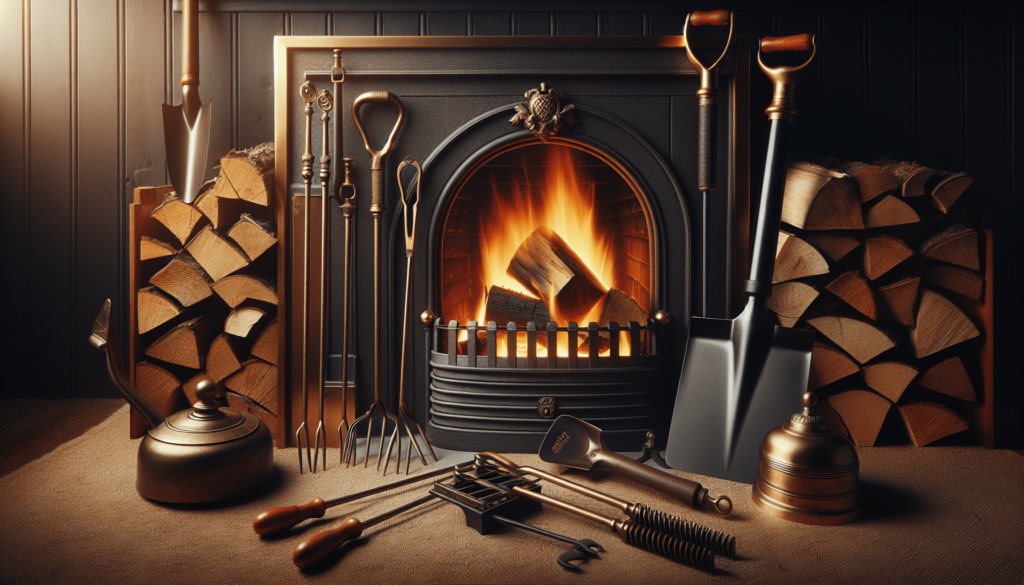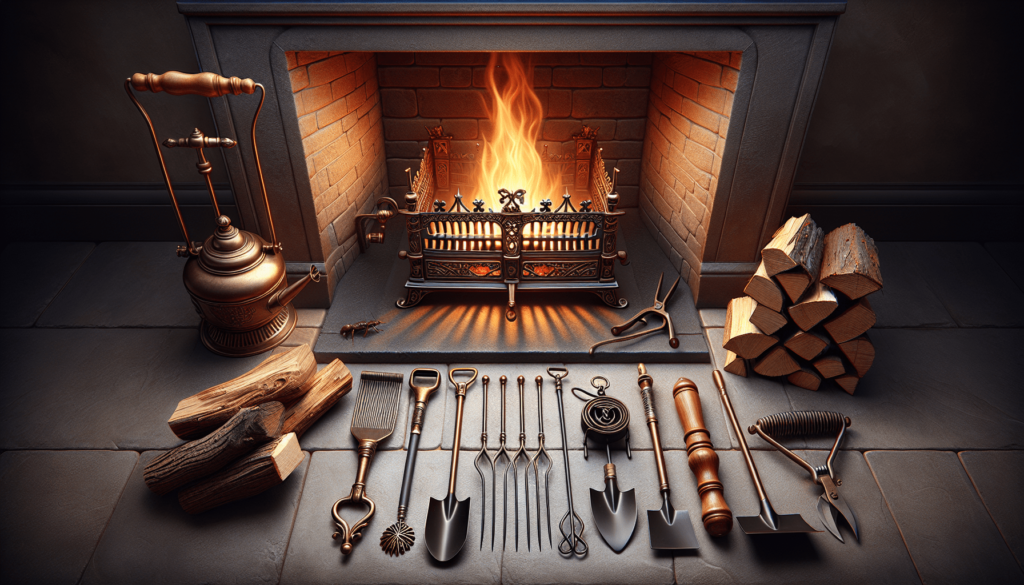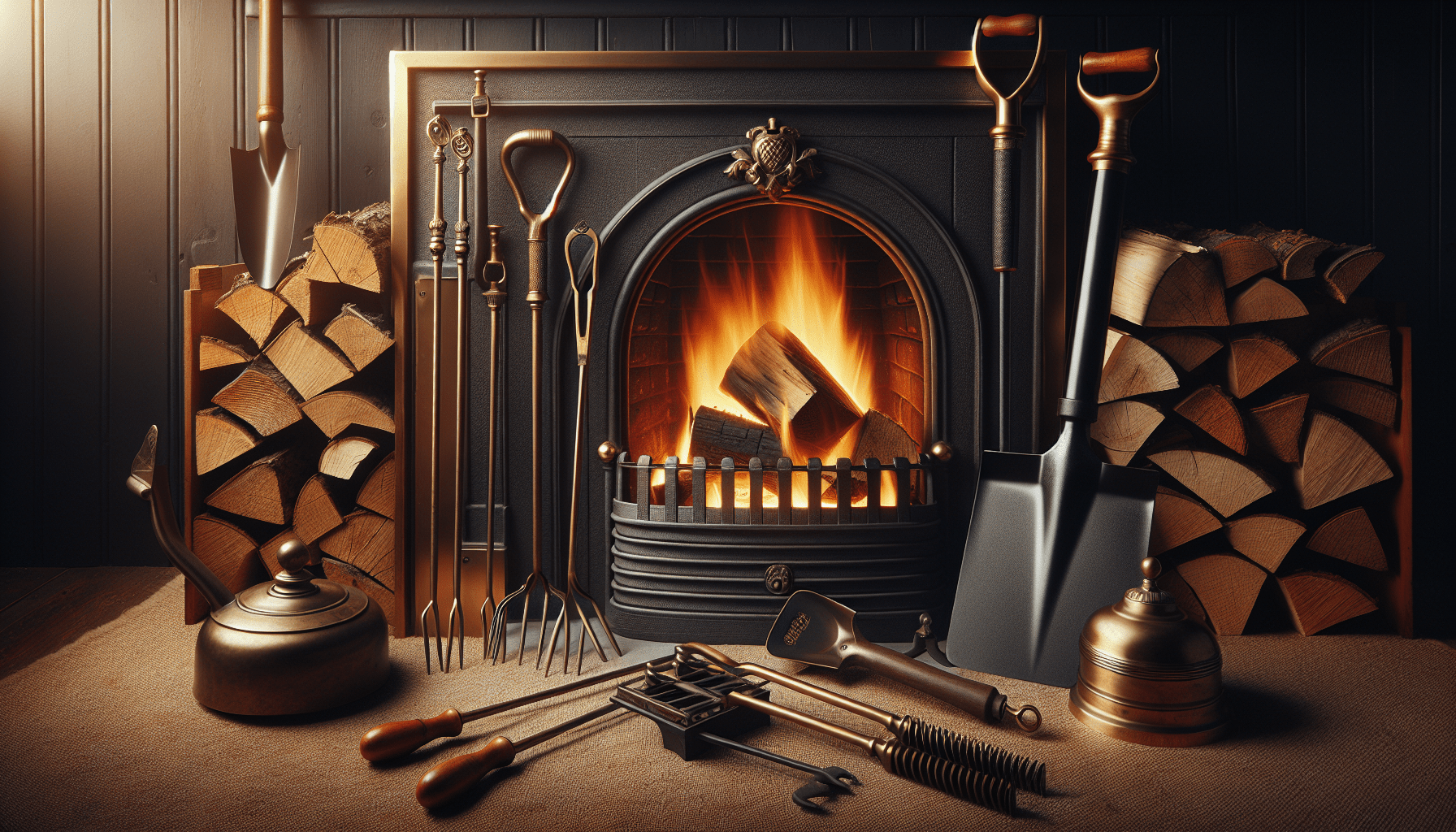When I first decided to install a wood-burning fireplace in my home, I quickly discovered that having the right tools is essential for both safety and convenience. The crackle of the fire and warm glow are undoubtedly charming, but without proper equipment, maintaining that cozy ambiance becomes a hassle. From basic implements like a sturdy fireplace poker and tongs to more specialized gadgets including a high-quality chimney brush and ash vacuum, each tool plays a crucial role. With the right setup, you can keep your wood-burning fireplace running smoothly and safely, making those chilly evenings something to genuinely look forward to. Have you ever found yourself staring at your brand-new fireplace, a couple of logs awkwardly perched in the grate, wondering if you’re doing it right? Trust me, I’ve been there—torn between excitement and the fear of accidentally setting the house on fire because I didn’t quite know what I was doing. Let’s delve into the wondrous world of wood burning fireplaces and, more importantly, the tools you need to keep things from going spectacularly wrong.

Getting Started with Flames: The Basics
Before we get into the nitty-gritty of specific tools, let me tell you why having the right stuff matters. Picture this: it’s a snowy evening, you’re cozying up with a hot cup of cocoa, and flicking through Netflix with your feet in woolly socks. You go to light the fire, only to realize—you’ve got nothing but a matchstick and a couple of newspapers. Believe me, you don’t want to be in that situation. At best, you’ll end up looking like a chimney sweep from a Dickens novel; at worst, it won’t ignite at all.
So, here’s what you’ll need.
Firewood
This one’s a no-brainer, right? But not all wood is created equal.
| Type of Wood | Characteristics |
|---|---|
| Hardwoods (Oak, Maple) | Longer burn time, more heat, less smoke. Higher cost and harder to split. |
| Softwoods (Pine, Fir) | Quick to ignite, burns fast, more smoke, and sparks. Typically cheaper. |
| Kiln-dried wood | Low moisture content; easy to light, burns efficiently. Can be pricier. |
| Green/Wet wood | Hard to ignite, lots of smoke, low heat, can lead to creosote buildup. Best avoided. |
I find that hardwoods, despite their cost, pay off in their ability to sustain a longer, cleaner burn.
Firewood Rack
Maybe you’re thinking you can just pile up some logs next to the fireplace and call it a day. Not so fast. Without a proper firewood rack, you’re inviting creepy crawlies into your living room—that’s the last thing you need when you’re just trying to set the mood.
Fireplace Grate
A grate is essential for keeping your logs elevated. It allows air to circulate underneath, which helps with combustion. Without it, you’re going to spend more time rekindling the fire than actually enjoying it.
Essential Fireplace Tools
Alright, we’ve got our firewood sorted. What’s next? Consider these tools your fireplace survival kit, each with a specific role to play in your fire adventure.
Fire Poker
This is your basic stick with attitude. The fire poker helps you maneuver logs and embers without sticking your hands into the flames—important for those of us fond of our fingers.
Tongs
Tongs are like the fire poker’s more flexible cousin. While the poker is good for shoving things into place, tongs let you pick up and carefully place logs, giving you more control over your fire’s structure. Ever tried grabbing a hot log with a poker? I wouldn’t recommend it.
Shovel
Unless you’ve trained a small legion of hamsters to clean your fireplace, you’ll probably need a shovel. It’s essential for scooping out ashes and embers, keeping your hearth clean and your fire healthy.
Brush
Think of the brush as the shovel’s sidekick. Once you’ve scooped out the heavy stuff, the brush sweeps away the lighter ashes and keeps your fireplace tidy—because as much as you may love the rustic look, ashes all over the floor are less “romantic evening” and more “cleanup nightmare.”
Ash Bucket
A metal ash bucket is non-negotiable. Remember, those ashes can stay hot for days, and unless you’re keen on testing your smoke alarm, you’ll want a safe place to dispose of them.
The Unsung Heroes: Specialty Tools
For those who want to go above and beyond—or find themselves facing unique challenges—these specialty tools can be lifesavers.
Bellows
Do you find your fires petering out just when they’re supposed to be blazing? Welcome to the world of bellows. They’re perfect for directing a concentrated stream of air into the fire, giving it that extra oomph it needs to get started or reignite.
Andirons
I wasn’t intimately familiar with these until a friend gifted me a pair, thinking they were mere decorations. Andirons lift your firewood higher than a standard grate, allowing even better air circulation. Bonus: they often come in stylish designs, adding that extra bit of flair to your hearth.
Fireback
A fireback essentially reflects the heat from your fire back into the room. If you live in an igloo—or a house that feels like one—a fireback can make your fireplace more efficient by preventing heat from being lost up the chimney.
Safety First: Essential Safety Gear
It’s all fun and games until someone gets scorched. Safety tools are absolutely vital to ensuring your fireplace doesn’t turn into a hazardous encounter.
Fireplace Screen
A screen is your first line of defense against rogue sparks and embers. Whether it’s a decorative screen or something heavy-duty, having one is crucial for keeping your living space— and your loved ones—safe.
Heat-Resistant Gloves
Handling logs and tools near an open flame without gloves is akin to hugging a porcupine—it’s just a bad idea. Heat-resistant gloves let you manage your fire without the risk of burns or minor injuries.
Carbon Monoxide and Smoke Detectors
If you don’t have these already, now’s the time to invest. Carbon monoxide is a silent killer, and smoke detectors are essential for early fire detection. Equip your home with these lifesaving devices; it might just turn a mishap into a manageable situation.
Fire Extinguisher
One of the most critical safety tools is a fire extinguisher. Make sure it’s rated for all types of household fires, including wood and electrical. Keep it close to the fireplace, and familiarize yourself with its operation.

Maintaining Your Tools: The Unspoken Rule
Just like any good relationship, maintaining your fireplace tools is essential. Rusty, broken, or improperly cared-for tools can be dangerous and inefficient.
Cleaning and Storage
Periodically clean your tools to remove soot and ash. Store them in a dry place to prevent rust, and always check for any wear and tear before using them.
Inspecting Your Chimney
Don’t forget, the chimney is an essential part of your fireplace system. Regular inspections and cleanings, ideally by a professional, will help prevent creosote buildup—a potential fire hazard.
Conclusion: Stoke the Flames of Expertise
By now, I hope you’re feeling a bit more like a seasoned fire-tender and less like someone who might accidentally set their home ablaze. From the basics of firewood to the intricacies of bellows and firebacks, having the right tools makes all the difference. Remember, a well-tended fire is not just about warmth; it’s about creating a space where stories are shared, and memories are made. Trust me, once you’ve got your gear sorted, those cozy evenings by the fire will be moments you’ll cherish.
There you have it—a comprehensive guide to the tools you need for your wood burning fireplace. Now, go stoke that fire, enjoy the crackling logs, and let the warmth carry you through those chilly nights.

